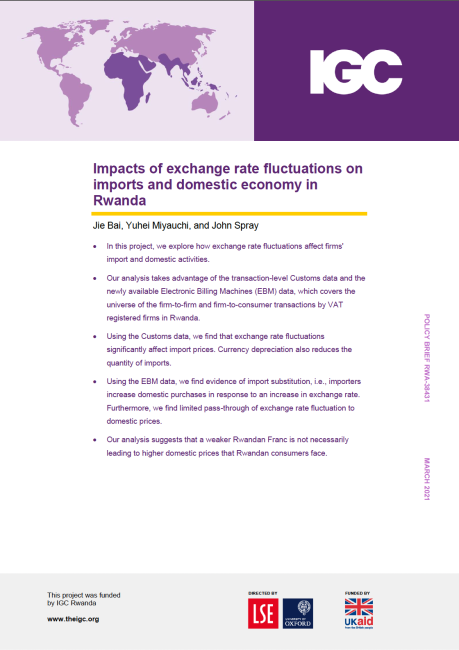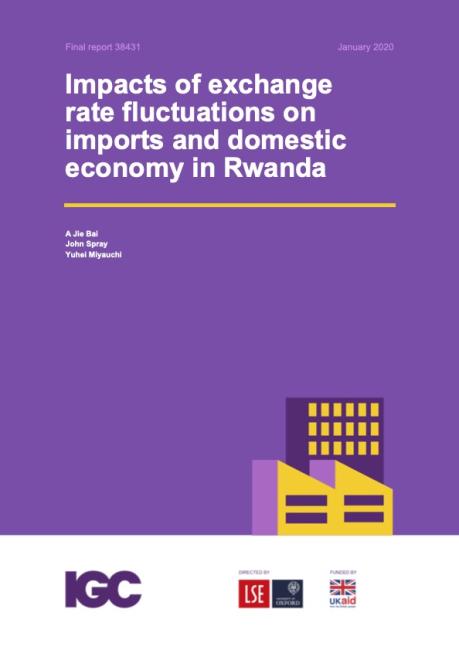Prices, firm-to-firm trade, and import substitution in Rwanda
In developing countries, where domestic firms often lack the capabilities to produce intermediate goods efficiently, firms rely heavily on imported intermediate inputs for production. Reflecting this observation, there is now ample evidence that import prices of these intermediate goods have important consequences for production and profit margins of the domestic importers (e.g., De Loecker et al., 2016). What is less well known, however, is how import price changes influence the prices and production of upstream and downstream firms, and consequently the prices that final goods consumer faces. Despite the theoretical implication that price distortions along supply chains are important for aggregate economic growth and welfare (Kremer, 1993; Jones, 2011; Liu, 2017), empirical evidence is scarce, mainly due to the lack of data.
We tackle this question using a novel dataset in Rwanda, which includes receipt-level information on prices, quantity, and products of firm-to-firm and firm-to-consumer transactions. The data is collected through the Electronic Billing Machines (EBM) installed in all establishments registered for VAT in Rwanda (IGC, 2018). We complement this novel dataset with the standard transaction-level customs data that captures import prices and study the interaction between import prices and domestic prices along the supply chain. More concretely from a policy perspective, we analyze how the recent depreciation of the Rwandan Franc has affected the imported input prices and domestic prices through the supply chain, affecting final consumers in Rwanda. These analyses provide insight for exchange-rate and trade policies in Rwanda.
Our analysis proceeds in the following steps:
- Processing the text data of receipts and assign harmonized product code. The raw data of receipts data consists of over 100 GB of unformatted text. Most importantly, each item is not assigned a harmonized product code. We use up-to-date text-analysis methods (e.g., Naïve Bayes machine learning algorithm) to classify each item in the receipts to a harmonized product code.
- Documenting the descriptive patterns of import prices and domestic prices along the supply chains. Typically, importers do not sell imported products directly to final consumers in Rwanda; the imported products often pass through multiple layers of the supply chain (i.e., through intermediaries or product processing). Our analysis thus reveals how the changes in import prices are associated with the prices along the domestic supply chains, reaching to final consumers).
- Study how the exchange-rate fluctuations affect domestic prices through domestic supply chains and final consumer prices. Rwanda Franc has been deprecated over recent years, yet little is known what this implies for domestic prices along the supply chains. Hence, this is the first-order policy question. The exchange rate fluctuation also gives a plausibly exogenous variation of import prices, allowing us to document the causal implication of import prices on domestic prices.






